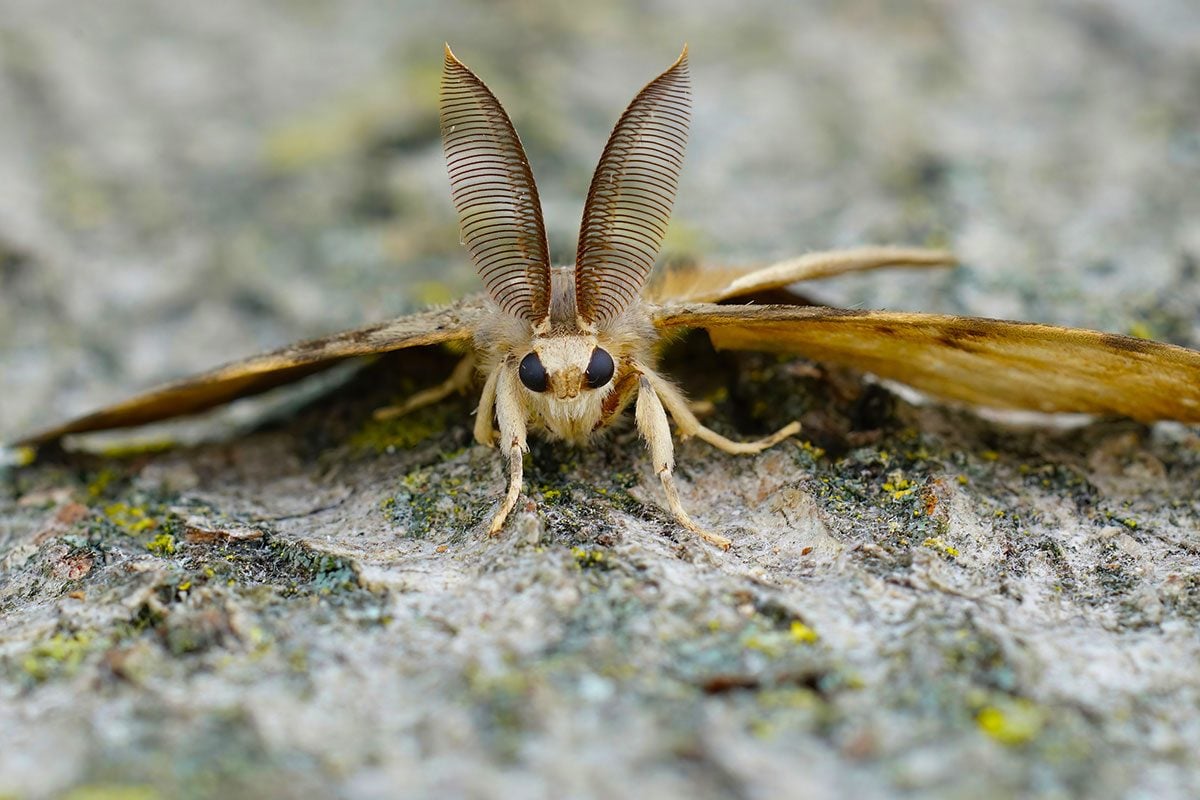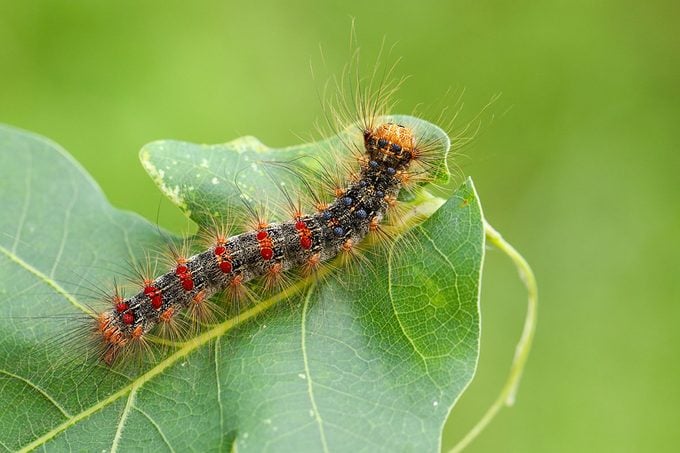Spongy moths have voracious appetites for your trees and shrubs. Avoid these pests with a few tips.

If You See a Spongy Moth, Here’s What to Do

Now that spring is finally on the horizon, you might have started leaving your house, taking walks and generally getting out in nature. So if you come across this pest in your daily outings, you might be wondering what it is, and what to do if you see it.
We’re talking about the spongy moth, which when left unchecked can wreak havoc on trees and shrubs. Keep reading to learn more about this invasive insect and what you should do if you come across one.
What Is a Spongy Moth?
The spongy moth (Lymantria dispar dispar, also formerly called the European gypsy moth) is native to France and first arrived in the United States in Massachusetts in 1869. The name is based on the destructive forest pest’s sponge-like egg masses.
When they are caterpillars, they eat new leaves of trees and shrubs like oak, aspen, birch, cedar, cottonwood, larch, poplar and willow. When they grow, they start consuming older leaves. Oak is the preferred species of tree for spongy moths, and they will harm fruit trees.
If you’re trying to find out what their eggs look like, you should be on the lookout for light, coffee-colored fuzzy patches on tree trunks, branches and piles of firewood. You might also spot them on patio and lawn furniture. Egg masses can contain 600 to 700 eggs!
Why Are Spongy Moths Bad?

The spongy moth causes damage by slowly working to defoliate trees. This happens when the insects consume all or almost all the leaves of a tree. A tree without leaves loses the capability to photosynthesize. If a tree is unable to go through the stages of photosynthesis, it cannot produce the resources it needs for natural survival.
Because of its ability to defoliate trees year after year, the spongey moth poses a significant environmental threat. Infestations and treatments are serious concerns for outdoor living spaces and neighborhoods. There are no natural enemies to keep a growing spongy moth population in check.
What Are the Signs of a Spongy Moth Infestation?
There are a few signs to be on the lookout for to see if spongy moths have taken up residence, according to the United States Department of Agriculture. Female moths lay dark brown-ish egg masses with tufts of yellowish hairs on any type of surface, including trees, firewood, shrubs, agricultural products, household furniture and other items.
Newly hatched caterpillars will have a mottled yellow-to-gray pattern with tufts of bristle-like hairs. You will also notice a color pattern of five pairs of blue dots followed by six pairs of red dots along their backs.
Male moths can be identified as brown with a darker shaded pattern on their wings with a span of 1-1/2 inches. Females are slightly larger in size and have a faint white color with dark saw-toothed patterns on the wings.
Only male spongy moth adults are able to fly.
What Do You Do When You Spot a Spongy Moth?
If you come across a spongy moth, you’ll want to take action. Here are some things you can do.
Squishing and Scraping
It may seem like a simple solution, but it works: squishing and scraping!
When populations are still low, and you have a few egg masses and caterpillars around, you can get ahead of the problem by eliminating them early in the season. Use the scrape-and-squish approach and continue as needed throughout the season. The squish-and-scrape method is similar to how you get rid of the spotted lanternfly.
Young caterpillars and adults can be killed by squishing them. Egg masses can be destroyed by scraping them off trees or other structures and dropping them in a container of detergent. If you spot egg masses, use a credit card to scrape them into a zip-close bag with a little rubbing alcohol. This will kill the bugs on contact. You can also try hand sanitizer or bleach.
Bands
Bands may be an option to consider if you have a few oak trees or other varieties of foliage considered to be “highly preferred” by the spongy moths. Using bands in your yard and patio areas can help reduce the number of caterpillars feeding on leaves.
Sticky bands are placed around the tree’s trunk in the spring to catch caterpillars when they begin to hatch and crawl. Bands can be bought at local hardware stores or garden centers. It is important to check the band on a regular basis for any unintended wildlife that may come in contact with the set-up.
When caterpillars enter a larger stage in mid-to-late June, the barrier bands should be replaced with a trap.
Pheromone Traps
Pheromone traps for spongy moths can be purchased in either orange or green colors. They are also called delta or triangle traps due to the shape of the equipment. These can be stapled or zip-tied to trees. The inside of the structure has a string that contains a pheromone which works to attract a female moth.
Burlap Traps
When the caterpillars get about an inch long in the month of June, they will move down the trunk to hide from predators during the day. Take advantage of this natural behavior to trap and reduce the number of larvae with a burlap trap secured to trees.
Check every day from early afternoon until early evening for a yield of insects collected. They can be removed and placed in a container of soapy water to kill them.
Horticultural Oil
Horticultural oils, also known as dormant oils, are solutions made from petroleum or plants. This method of application works to smother insects or disrupt the protective coating around the eggs. The oils are relatively safe for humans and animals.
Various treatment options for spongy moths are available at garden and supply centers and stores.
Chemical insecticides are contact poisons and should be avoided. They can have an impact on a variety of beneficial, native insects like local bee populations as well as nesting birds and other wildlife.




















